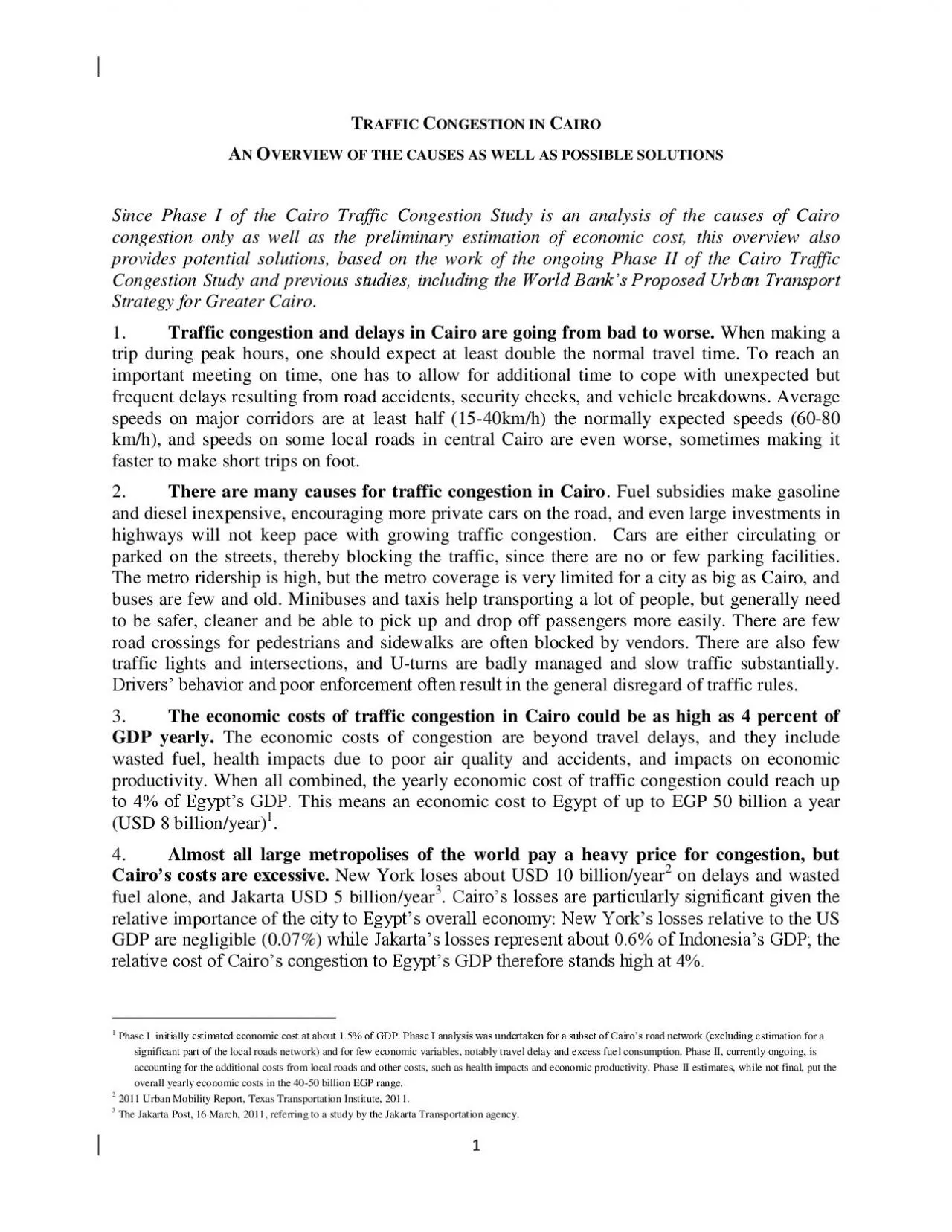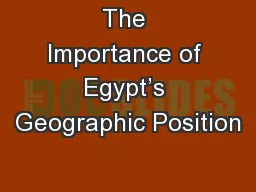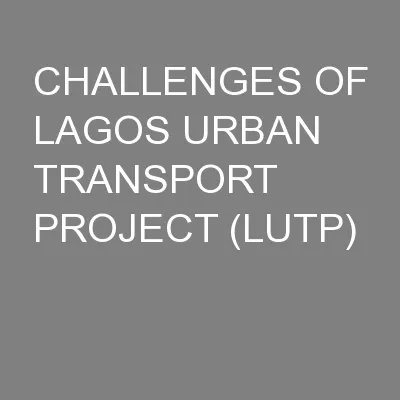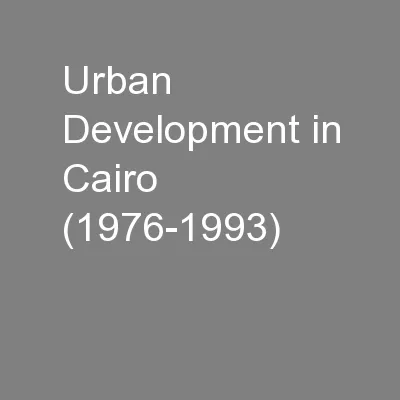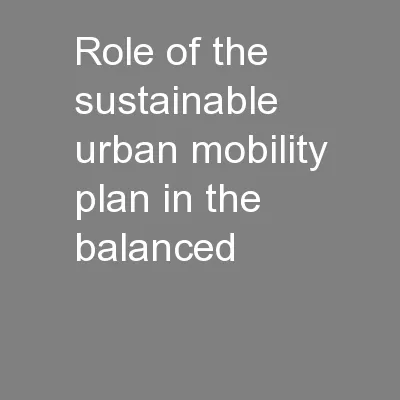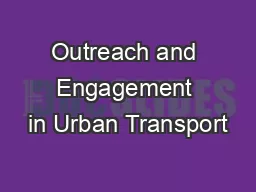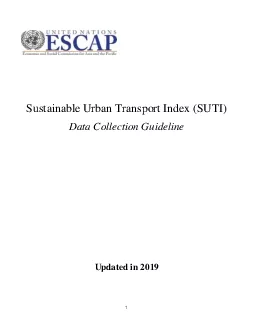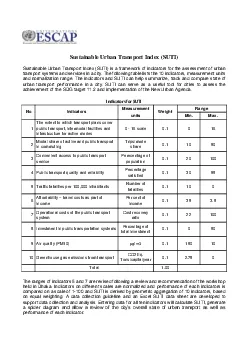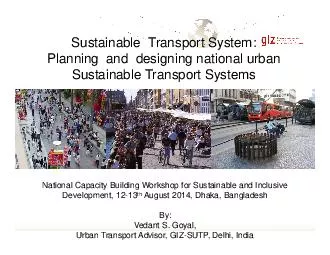PDF-coherent efficient and integrated urban transport system Cairo desp
Author : ethlyn | Published Date : 2022-08-24
3 authority with sufficient resources and power to move the urban transport agenda at the required fast pace to meet Cairos increasing congestion challenges 2 5 World
Presentation Embed Code
Download Presentation
Download Presentation The PPT/PDF document "coherent efficient and integrated urban ..." is the property of its rightful owner. Permission is granted to download and print the materials on this website for personal, non-commercial use only, and to display it on your personal computer provided you do not modify the materials and that you retain all copyright notices contained in the materials. By downloading content from our website, you accept the terms of this agreement.
coherent efficient and integrated urban transport system Cairo desp: Transcript
Download Rules Of Document
"coherent efficient and integrated urban transport system Cairo desp"The content belongs to its owner. You may download and print it for personal use, without modification, and keep all copyright notices. By downloading, you agree to these terms.
Related Documents

